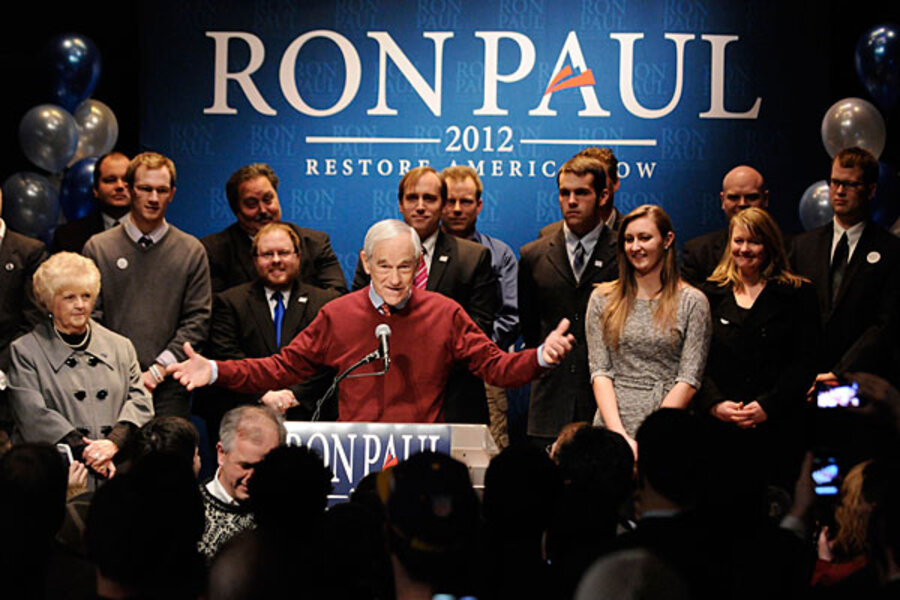Ron Paul's secret ninja strategy for Maine caucuses
Loading...
Ron Paul has a secret, ninja-like Seal Team 6 strategy to win big in the Feb. 11 Maine Republican caucuses. Mitt Romney, Rick Santorum, and the mainstream media won’t see Paul’s forces coming until they’ve snatched a majority of the Pine Tree State’s 24 delegates and raced off towards August and the national convention in Tampa, Fla.
OK, that’s kind of an exaggeration. But it contains a nucleus of truth. The Paul team has a plan for winning more delegates in many caucus states than straw poll votes would indicate Paul is entitled to. Mr. Paul’s supporters are proud of this approach, which has “not been clearly reported”, as Paul campaign manager John Tate said earlier this week.
We’ll use Maine to explain how this works.
On Saturday, Feb. 11, Maine’s Republican Party is set to announce the results of a presidential preference poll taken at caucuses held around the state. (While many of those caucuses will take place on Saturday, some towns held theirs weeks ago, as we’ve previously noted.)
But that poll is non-binding. It’s a beauty contest, a straw vote, a mere indicator of personal preferences. It will not be indicative of how the state’s delegates will be divvied up.
That apportionment will be the result of a second task the caucuses were supposed to accomplish: selection of delegates to the state GOP convention in May. It’s that meeting that will officially put its stamp on for whom Maine’s delegates will go. So if Paul’s folks stick around at town caucuses and get themselves picked as delegates to the state confab, voila, they can then vote for their guy at the state convention. Thus it’s possible for Paul – or any candidate who tries this – to outperform their beauty contest showing.
That’s the case in most other caucus states, too. (Nevada is different.) As Davidson College political scientist Josh Putnam points out on his invaluable voting process blog Frontloading HQ, “delegates from those states cannot be allocated until, well, they are allocated. In Iowa, Minnesota, Colorado, and over the weekend add Maine to the mix, that won’t happen until the congressional district or state conventions.”
Paul campaign manager Mr. Tate spelled out some of the practical implications of this in his statement to supporters. In Minnesota, where Paul finished second to Mr. Santorum in the preference poll, “the Paul campaign is well-organized to win the bulk of the delegates there,” according to Tate.
In Colorado, where Paul finished fourth with 12 percent of the vote, the Texas libertarian will end up with more than 12 percent of the state’s delegates, Tate asserted. In Larimer County, where the straw poll vote was 23 for Santorum and 13 for Paul, Paul supporters took all 13 state delegate slots available, for instance. In Delta County, where the preference vote went 22 for Santorum, 12 for Mr. Romney, and 8 for Paul, Paul took all five available delegate slots. And so forth.
It’s possible that the Paul campaign is cherry-picking districts here in an attempt to make their results look good. It’s also possible that Paul has greater underlying delegate strength at the moment than most members of the Pundit Club realize.
Of course, he’ll need those delegates. At the moment, Romney has 94 pledged delegates that count toward the national convention in Tampa, according to a New York Times calculation. Santorum has 71, and Newt Gingrich 29. Paul has eight.
Plus, the total number of delegates at stake in all GOP caucus states this year is 462, by our count. Yet a candidate needs 1,144 delegate votes to win the nomination. Clearly there are limits to any caucus-centric Paul strategy.





